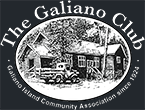Putting Food By – Alison Colwell
 It is one of the sweetest sounds of late summer. The soft, ping, ping as the jars on the counter seal. It is one of the most satisfying sites – rows of translucent, jewel toned jars, filled and ready to be stored. It’s rewarding to see shelves filled with sparkling jars of homemade preserves, made from the freshest fruit, put by for the winter.
It is one of the sweetest sounds of late summer. The soft, ping, ping as the jars on the counter seal. It is one of the most satisfying sites – rows of translucent, jewel toned jars, filled and ready to be stored. It’s rewarding to see shelves filled with sparkling jars of homemade preserves, made from the freshest fruit, put by for the winter.
As the harvest starts to come in I am always seized by an inescapable urge to save the food, to put it up for the cold months ahead. Perhaps it comes from my grandmother, from a generation that lived through the London blitz and the food shortages that followed the war, or perhaps it’s simply a part or our biological heritage, similar to the squirrels urge to stockpile nuts or geese need to fly south.
I do know that there are few things more satisfying than looking at pantry shelves laden with home canned goods, or knowing that your freezer is full of food to feed you over the winter.
When I first moved to Galiano I lived at the north end of the island, off the grid, and “putting food by” meant canning jams and tomatoes, and drying strings of onions and braids of garlic to hang from the rafters through the winter. Now that I live with power, I also fill my freezers with frozen pies, berries, stews and casseroles. My grandmother taught me to make jam. Some of my earliest memories of my grandmother are standing with her in the kitchen with a pan of jam bubbling on the stove, and cutting out disks of wax paper to seal the tops! In my grandmother’s time, everyone “put food by”; for our generation, and those following us, we need to remember or relearn those skills. Each fall I lead classes in preserving and pickling through the Food Program, as a way to pass on that knowledge and to stop it getting lost.
Making jams and preserves or canning tomatoes is one of the best ways to extend the bounty of the harvest. It’s satisfying to eat something you have made yourself. It will taste better, and cost less than anything you find in a store. And provided you follow some simple techniques, proper hygiene and food safety, careful storage, preserving will be successful and rewarding.
